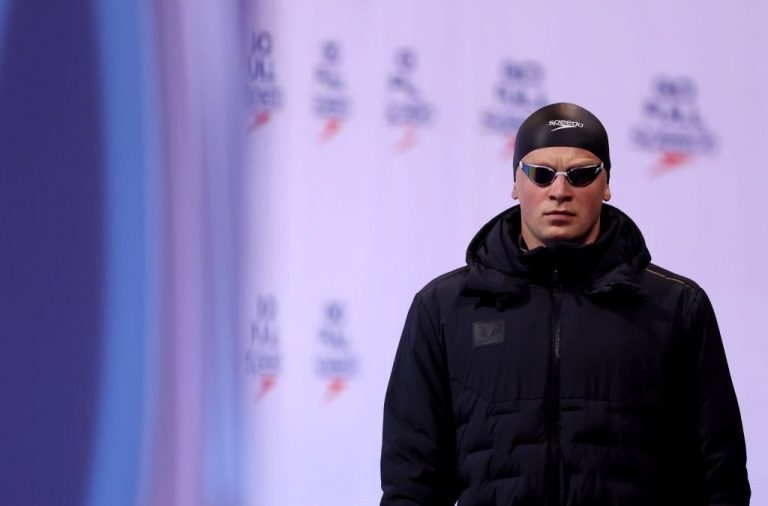Australian Olympic Committee announced on Tuesday, just an hour before the start of qualifying, that Australian athlete Lani Pallister would withdraw from the women’s 1,500m freestyle after testing positive for COVID-19.
The news sparked concern at La Défense arena in Paris after British swimmer Adam Peaty acknowledged on Monday that he had also had the disease, just hours after winning silver in the men’s 100-meter breaststroke final.
The positive test has put his future participation in Paris 2024 in doubt, but Peaty is determined to recover in time to reunite with his teammates for the relay later this week.
This isn’t the only curveball Olympic swimmers will face.
On Tuesday, the men’s Olympic triathlon was postponed just hours before it was scheduled to start after tests of the Seine River found pollution levels were still too high for athletes to swim safely.
Heavy rain in Paris on Friday and Saturday had forced them to “reschedule the event for health reasons,” authorities said in a statement.
However, with further rain forecast for later this week, swimmers will be anxiously waiting to see if water conditions improve.
Why do swimmers put on jackets before a race?
Ryan Murphy of Team USA before the men’s 100m backstroke final at the 2024 Paris Summer Olympics (Photo by Stephen McCarthy/Sportfile via Getty Images)
Previously, swimmers competing at Paris 2024 have often appeared poolside in long, bulky winter coats before stripping off and getting ready to enter the pool.
Their decision to finish in mid-July, despite the weather possibly being a bit unpredictable, is getting some attention.
However, the choice to wear such clothing is not based on aesthetics, but rather on the fact that it is an important addition to your pre-swim gear.
In almost all sports, a thorough warm-up is an essential part of pre-competition preparation.
Wearing a warm jacket generates heat and helps relax the athlete’s muscles before the swim, a key requirement before a big race.
It also helps regulate body temperature.
Warming and relaxing your muscles increases oxygen and blood flow — all key factors in making your strokes and movements in the water cleaner, faster and more powerful.
A small study published in the European Journal of Sports Science in 2018 found that swimmers who wore warm clothing before a race performed about 0.6% better than those who didn’t.
While this percentage may seem negligible, it could mean the difference between a gold and silver medal at the Olympics, and may explain why swimmers choose to wrap up before big races.
Why do some swimmers have dark circles on their bodies?
Italian swimmer Nicolo Martinenghi celebrates after winning gold in the men’s 100m breaststroke final at the Paris 2024 Olympic Games. Cupping marks are visible on his skin (Photo: Stephen McCarthy/Sportfile via Getty Images)
Eagle-eyed viewers may have noticed what appear to be black bears appearing on the bodies of some swimmers and other athletes during the Paris 2024 Games.
These distinctive marks are left behind after a cupping treatment.
It’s a form of alternative medicine in which a therapist applies special cups to the skin for a few minutes to create suction.
This process is thought to help with pain, inflammation, blood flow, relaxation, and overall wellness.
The discoloration that remains after cupping therapy is caused by burst blood vessels just under the skin, similar to a bruise. It is not painful.
Read next
Cupping therapy has been practiced for thousands of years, with roots in ancient Chinese, Egyptian and Middle Eastern cultures.
The procedure gained widespread attention in 2004 when Gwyneth Paltrow attended a film premiere wearing a low-cut top that revealed a large circular scar on her back, the result of cupping.
However, at the 2016 Rio Olympics, athletes such as Michael Phelps emerged with cupping marks, bringing attention to the use of cupping in sports medicine.
Harvard Medical School says the effects of cupping are difficult to measure and the medical benefits of the treatment are inconclusive.
“One problem is that high-quality studies on cupping are difficult to conduct,” the report reads.
“The best studies are ‘blinded, placebo-controlled’ studies, in which neither patients nor researchers know which treatment (active or placebo) the subjects are receiving.
“When studying a drug, it’s not hard to make a placebo drug. But making a convincing placebo comparator for cupping can be much harder. Furthermore, pain can be hard to measure, and the placebo effect – an improvement associated with the expectation of an effect – can be very powerful.”


